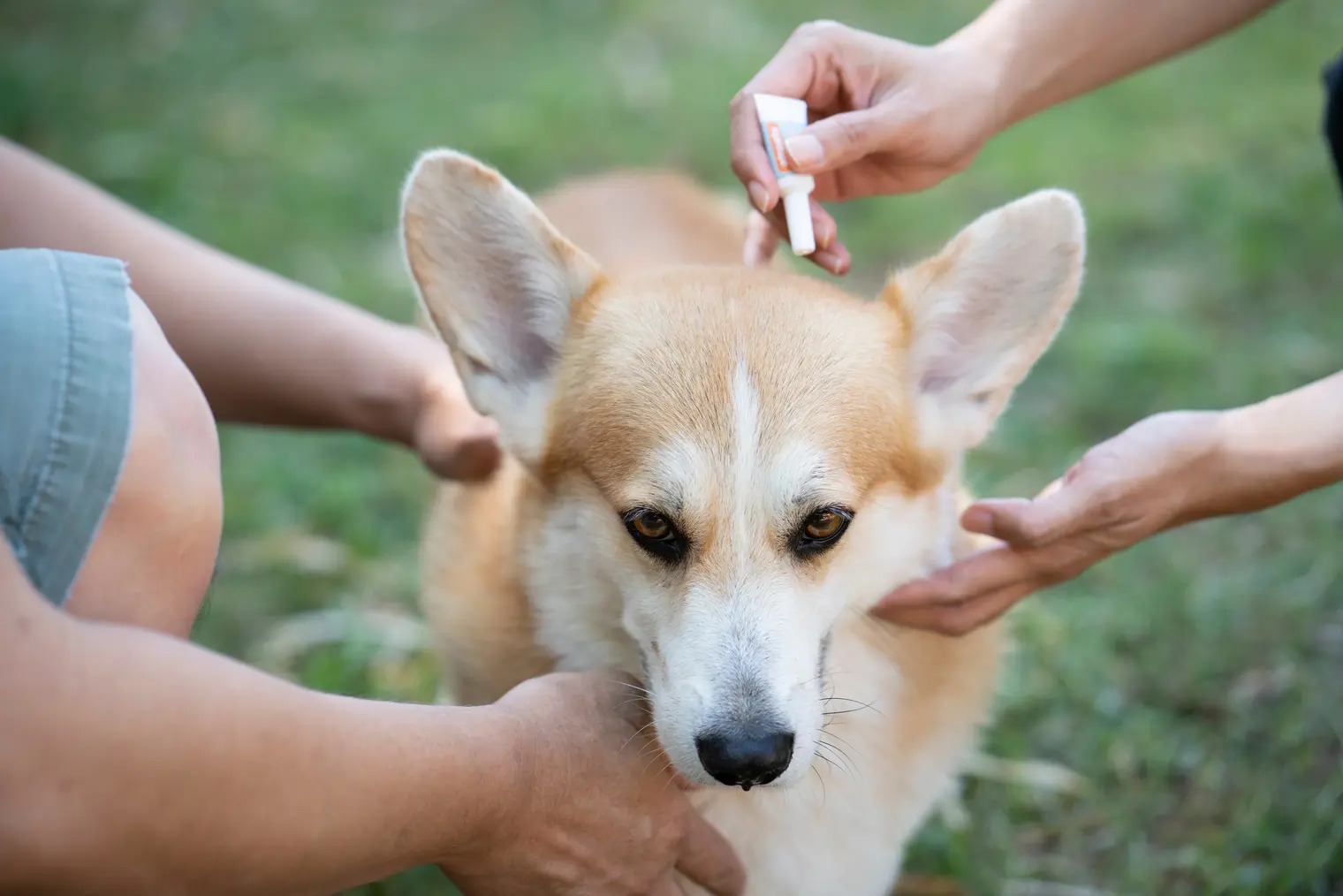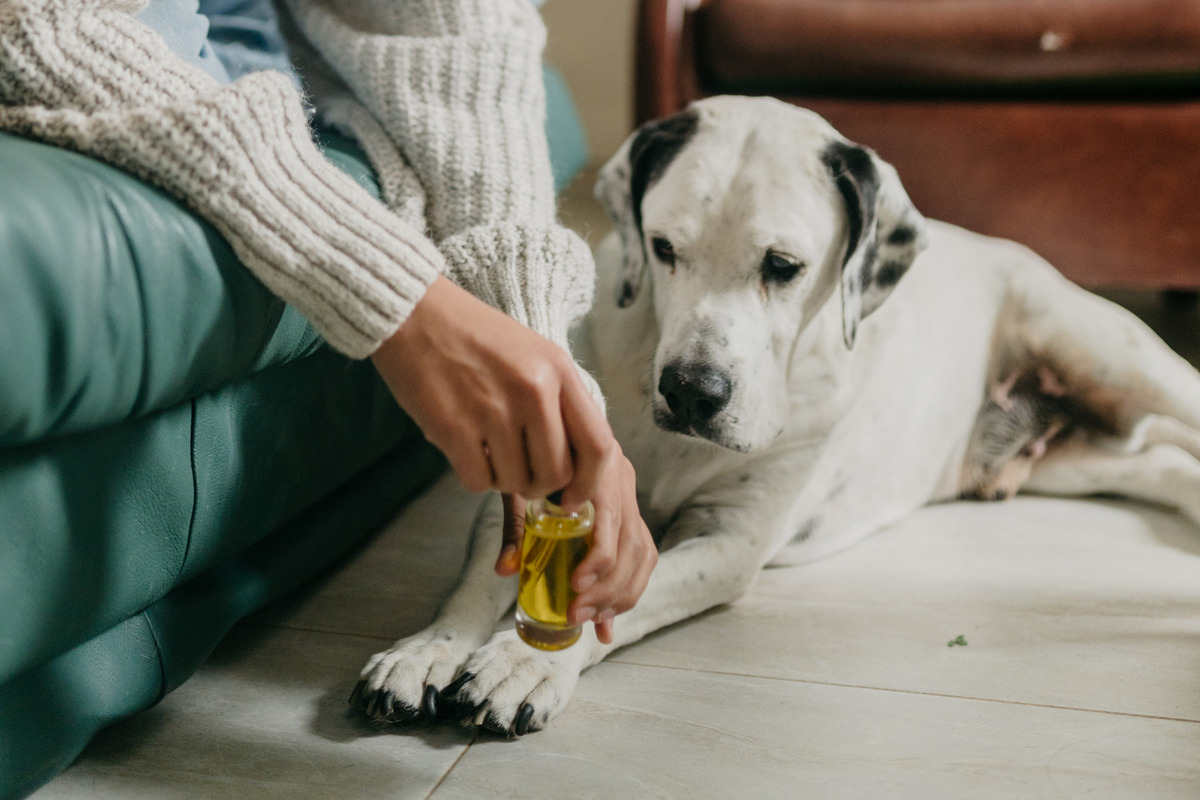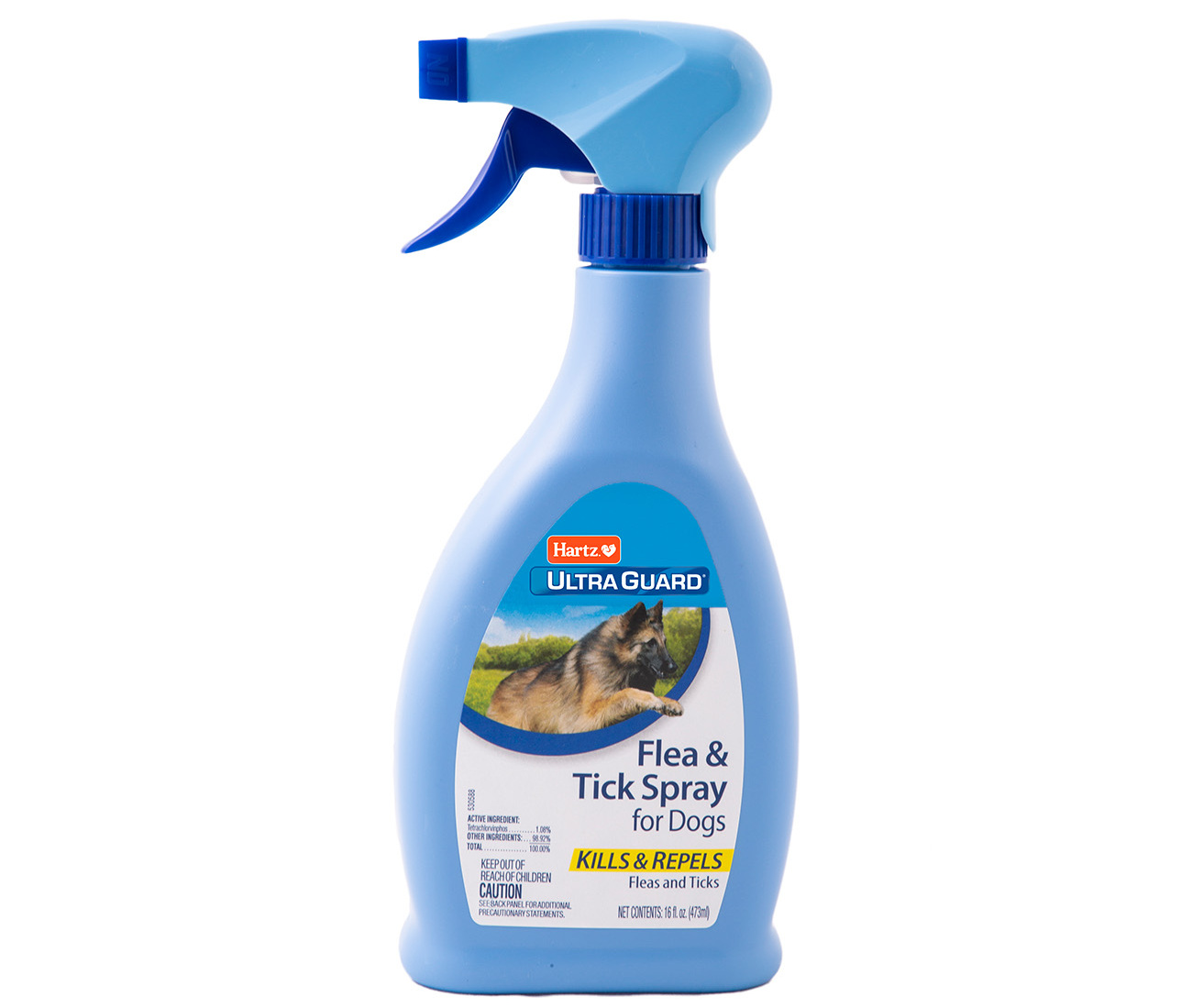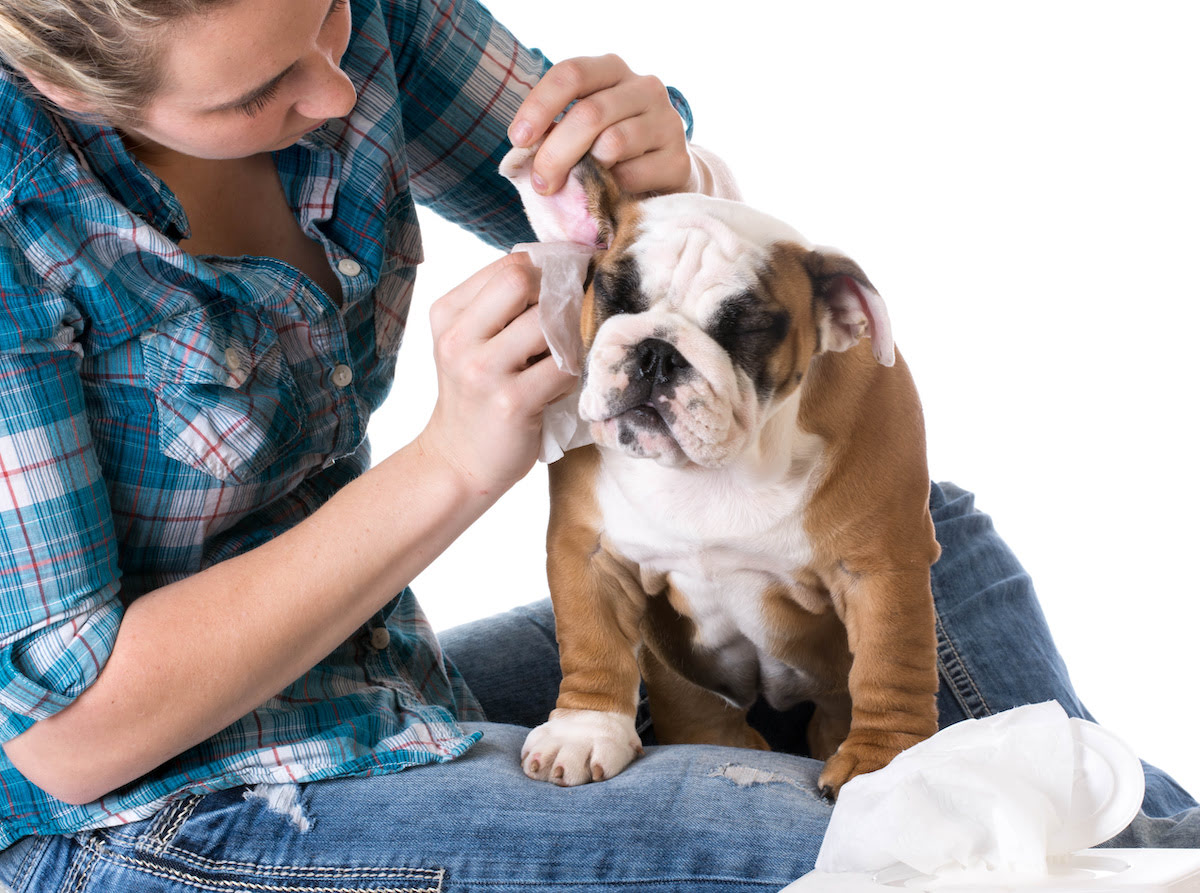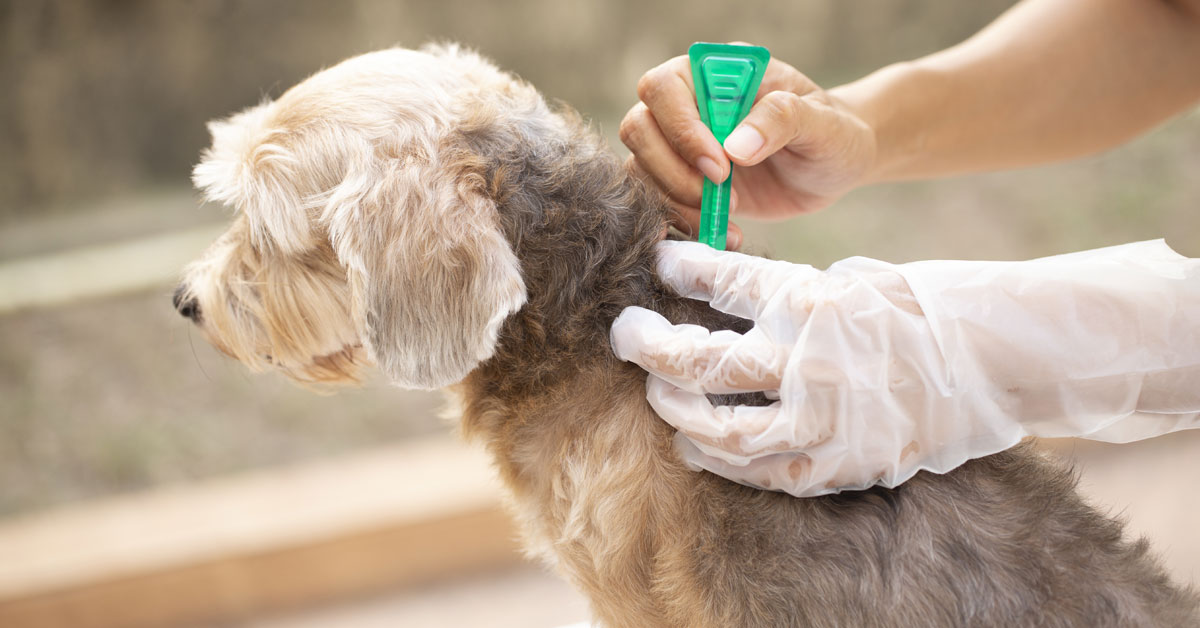Home>Health & Wellness>Common Health Issues>How To Prevent Ticks And Fleas On Dogs


Common Health Issues
How To Prevent Ticks And Fleas On Dogs
Modified: February 21, 2024
Learn how to protect your dog from common health issues like ticks and fleas with our expert tips and prevention methods. Keep your furry friend healthy and happy!
(Many of the links in this article redirect to a specific reviewed product. Your purchase of these products through affiliate links helps to generate commission for Pawsomeoldies.com, at no extra cost. Learn more)
Table of Contents
Introduction
Ticks and fleas are common parasites that can wreak havoc on the health and well-being of our beloved canine companions. These tiny pests are not only a nuisance but also pose significant health risks to dogs and, in some cases, to humans as well. Understanding the importance of preventing tick and flea infestations is crucial for maintaining the overall health and happiness of our furry friends.
Ticks are arachnids that attach themselves to the skin of dogs, feeding on their blood and potentially transmitting harmful diseases such as Lyme disease and Rocky Mountain spotted fever. On the other hand, fleas are wingless insects that can quickly multiply and infest not only the dog but also its living environment, leading to itching, discomfort, and even allergic reactions.
Preventing ticks and fleas on dogs is not only about addressing the immediate discomfort and health risks but also about ensuring the long-term well-being of our pets. By taking proactive measures to protect our dogs from these parasites, we can help them lead healthier, happier lives.
In this comprehensive guide, we will delve into the world of ticks and fleas, exploring the signs of infestation, preventative measures, and natural remedies to keep these pesky parasites at bay. By gaining a deeper understanding of these common health issues and learning how to effectively prevent and manage them, we can provide our furry companions with the care and protection they deserve. Let's embark on this journey to safeguard the health and happiness of our canine friends.
Read more: How To Prevent Fleas From Dogs
Understanding Ticks and Fleas
Ticks and fleas are relentless parasites that can cause significant distress to dogs and their owners. Understanding the characteristics and behaviors of these pests is crucial in effectively preventing and managing infestations.
Ticks
Ticks are arachnids belonging to the order Parasitiformes. These blood-sucking parasites have a remarkable ability to latch onto the skin of dogs, where they feed on their blood. Ticks are commonly found in outdoor environments, particularly in grassy, wooded, or bushy areas. When a tick attaches itself to a dog, it can transmit a variety of diseases, including Lyme disease, ehrlichiosis, anaplasmosis, and Rocky Mountain spotted fever. These diseases can cause symptoms ranging from mild discomfort to severe illness and, in some cases, can be life-threatening.
Ticks have a unique life cycle, progressing through four stages: egg, larva, nymph, and adult. During each stage, ticks require a blood meal to progress to the next phase of their life cycle. This makes dogs particularly vulnerable to tick infestations, as these parasites actively seek out hosts to feed on.
Fleas
Fleas are wingless insects of the order Siphonaptera. These tiny, agile parasites are capable of jumping impressive distances, allowing them to easily move between hosts. Fleas thrive in warm and humid environments, making them a common nuisance in many regions. When fleas infest a dog, they can cause intense itching, skin irritation, and allergic reactions. In severe cases, flea infestations can lead to anemia, especially in young or small dogs.
One of the most challenging aspects of dealing with fleas is their rapid reproductive rate. A single female flea can lay dozens of eggs each day, quickly leading to a full-blown infestation in the dog's living environment. This makes it essential to not only treat the dog but also address the surrounding areas to effectively eradicate fleas.
Understanding the biology and behavior of ticks and fleas is the first step in combating these persistent parasites. By gaining insight into their habits and potential health risks, dog owners can take proactive measures to protect their pets from infestations and the associated health complications.
Signs of Infestation
Identifying the signs of tick and flea infestations is crucial for prompt intervention and effective management. By recognizing the indicators of these parasitic invasions, dog owners can take swift action to alleviate their pets' discomfort and prevent the spread of diseases.
Ticks
- Visible Presence: Ticks are often visible to the naked eye, especially when they have engorged themselves with blood. They can appear as small, dark, or reddish-brown bumps on the dog's skin, particularly in areas with less hair, such as the ears, groin, and between the toes.
- Skin Irritation: Dogs may exhibit signs of skin irritation or inflammation at the site of a tick bite. This can manifest as redness, swelling, or localized discomfort.
- Lethargy and Fever: Infected ticks can transmit diseases that may cause dogs to experience lethargy, fever, and a general decline in energy and well-being.
Fleas
- Excessive Scratching: Flea infestations often prompt dogs to scratch excessively, particularly around the neck, tail, and hindquarters. This behavior is a response to the discomfort caused by flea bites and the presence of these agile parasites on the skin.
- Visible Fleas or Flea Dirt: Fleas can be observed on the dog's fur, especially when parting the hair to inspect the skin. Additionally, flea dirt, which resembles dark specks or pepper-like particles, may be visible on the dog's coat or skin.
- Hair Loss and Skin Irritation: Prolonged flea infestations can lead to hair loss, redness, and skin irritation, often accompanied by the formation of scabs or hot spots.
General Signs
- Anemia: In severe cases of flea infestations, dogs may develop anemia, characterized by pale gums, weakness, and fatigue.
- Allergic Reactions: Some dogs may exhibit allergic reactions to flea saliva, leading to intense itching, redness, and the development of skin lesions.
By remaining vigilant for these signs of infestation, dog owners can promptly address tick and flea problems, seeking appropriate veterinary care and implementing effective preventative measures to safeguard their pets' well-being.
Preventative Measures
Preventing tick and flea infestations is essential for maintaining the health and comfort of dogs. By implementing proactive measures, dog owners can significantly reduce the risk of parasitic invasions and the associated health complications. Here are some effective preventative measures to protect dogs from ticks and fleas:
Regular Grooming and Inspection
Regular grooming and thorough inspection of the dog's coat and skin are fundamental in detecting and preventing tick and flea infestations. Brushing the dog's fur not only helps in removing loose hair and debris but also allows for the early identification of ticks or flea dirt. Additionally, closely examining the dog's skin, especially in areas prone to infestations, enables prompt removal of any parasites before they can cause harm.
Use of Preventative Products
Utilizing veterinarian-recommended tick and flea prevention products, such as spot-on treatments, oral medications, collars, or sprays, can effectively deter these parasites. These products are designed to repel ticks and fleas, disrupt their life cycles, or kill them upon contact. It is crucial to follow the usage instructions provided by the veterinarian and consistently administer these preventative products to ensure their efficacy.
Environmental Management
Maintaining a clean and well-kept living environment for the dog is vital in preventing flea infestations. Regular vacuuming, washing the dog's bedding, and treating indoor and outdoor areas with pet-safe insecticides or environmental control products can help eliminate fleas and disrupt their reproductive cycle. By addressing the dog's living environment, dog owners can significantly reduce the risk of flea infestations.
Avoidance of Tick-Prone Areas
When possible, avoiding areas known to be habitats for ticks, such as heavily wooded or grassy areas, can reduce the dog's exposure to these parasites. When venturing into tick-prone environments is unavoidable, using tick repellents and ensuring thorough post-outdoor grooming and inspection can minimize the risk of tick infestations.
Read more: How To Prevent Fleas From Biting My Dog
Regular Veterinary Check-ups
Scheduling regular veterinary check-ups for the dog allows for comprehensive health assessments, including the evaluation of tick and flea infestations. Veterinarians can recommend suitable preventative measures based on the dog's specific needs and environmental factors, ensuring a tailored approach to tick and flea prevention.
By incorporating these preventative measures into a comprehensive care routine, dog owners can effectively safeguard their pets from the distress and health risks associated with tick and flea infestations. Consistency and diligence in implementing these measures are key to ensuring the long-term well-being of dogs and providing them with a safe and comfortable living environment.
Natural Remedies
In addition to conventional preventative products, natural remedies can complement the efforts to repel ticks and fleas while minimizing exposure to potentially harmful chemicals. These remedies, often derived from plant-based sources, offer a more holistic approach to tick and flea prevention. It's important to note that while natural remedies can be effective, consulting with a veterinarian before use is advisable, especially for dogs with pre-existing health conditions or those on specific medications.
Essential Oils
Certain essential oils, when used appropriately, can act as natural repellents for ticks and fleas. Oils such as cedarwood, lavender, peppermint, and eucalyptus contain properties that are known to deter these parasites. Diluted essential oils can be applied to a dog's collar or bedding, or used in a spray solution after consulting with a veterinarian to ensure safety and proper dilution ratios.
Apple Cider Vinegar
Apple cider vinegar is a popular natural remedy for repelling fleas. When diluted with water, it can be used as a spray to mist the dog's coat, as well as added to their drinking water. The acidic nature of apple cider vinegar is believed to create an environment that is less hospitable to fleas, helping to deter infestations.
Read more: How To Prevent Arthritis In Dogs
Diatomaceous Earth
Food-grade diatomaceous earth, composed of fossilized remains of diatoms, is an effective natural remedy for controlling fleas. When lightly sprinkled on the dog's coat or applied to their living environment, diatomaceous earth acts by dehydrating and disrupting the exoskeleton of fleas, ultimately leading to their demise.
Herbal Flea Collars
Herbal flea collars, infused with natural ingredients such as citronella, eucalyptus, or neem, offer a chemical-free alternative to conventional flea collars. These collars emit natural scents that repel fleas while being gentle on the dog's skin. It's important to ensure that the herbal flea collar is specifically designed for dogs and does not contain any ingredients that may be harmful to them.
Neem Oil
Neem oil, derived from the seeds of the neem tree, possesses natural insecticidal properties that can effectively repel and control fleas. When properly diluted, neem oil can be applied to the dog's coat or used in a pet-safe shampoo to help manage flea infestations while providing additional skin benefits.
By incorporating these natural remedies into a comprehensive approach to tick and flea prevention, dog owners can explore alternative methods that align with their preferences for natural and holistic care. While natural remedies can offer valuable support in repelling ticks and fleas, it's essential to prioritize the safety and well-being of the dog by seeking professional guidance and using these remedies in a responsible manner.
Conclusion
In conclusion, safeguarding our canine companions from the perils of tick and flea infestations is a fundamental aspect of responsible pet care. By gaining a deeper understanding of the characteristics and behaviors of these parasites, as well as recognizing the signs of infestation, dog owners can take proactive measures to protect their pets from the distress and health risks associated with ticks and fleas.
The implementation of preventative measures, including regular grooming and inspection, the use of veterinarian-recommended tick and flea prevention products, environmental management, and avoidance of tick-prone areas, serves as a crucial line of defense against these persistent parasites. By integrating these measures into a comprehensive care routine, dog owners can significantly reduce the risk of infestations and provide their pets with a safe and comfortable living environment.
Furthermore, the exploration of natural remedies, such as essential oils, apple cider vinegar, diatomaceous earth, herbal flea collars, and neem oil, offers a holistic approach to tick and flea prevention. These natural alternatives, when used responsibly and in consultation with a veterinarian, can complement conventional preventative products and provide additional support in repelling ticks and fleas.
Ultimately, the well-being of our furry friends hinges on our commitment to their care and protection. By remaining vigilant for signs of infestation, seeking veterinary guidance, and consistently implementing preventative measures, we can ensure that our dogs are shielded from the discomfort and health risks posed by ticks and fleas. Through our dedication to their health and happiness, we can create a safe and nurturing environment where our beloved canine companions can thrive.
As we embark on this journey to safeguard the health and well-being of our dogs, let us embrace a proactive and holistic approach to tick and flea prevention, recognizing that our efforts play a pivotal role in enhancing the quality of life for our cherished pets.

